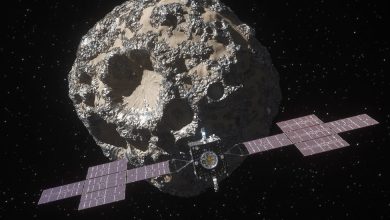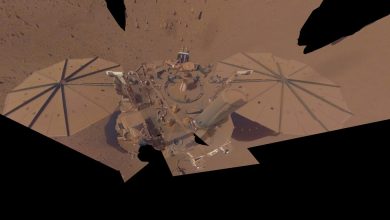Japanese Company Joins March Back to the Moon in 2022

A Japanese company is pushing ahead with plans to launch a private moon lander by the end of 2022, a year packed with other moonshot ambitions and rehearsals that could foretell how soon humans get back to the lunar surface.
If the plans hold, the company, ispace, which is based in Tokyo, would accomplish the first intact landing by a Japanese spacecraft on the moon. And by the time it arrives, it may find other new visitors that already started exploring the moon’s regolith this year from Russia and the United States. (Yutu-2, a Chinese rover, is currently the lone robotic mission on the moon.)
Other missions in 2022 plan to orbit the moon, particularly the NASA Artemis-1 mission, a crucial uncrewed test of the American hardware that is to carry astronauts back to the moon. South Korea could also launch its first lunar orbiter later this year.
But other countries that had hoped to make it to the moon in 2022 have fallen behind. India was planning to make its second robotic moon landing attempt this year. But its Chandrayaan-3 mission was delayed to mid-2023, said K. Sivan, who completed his term as the chairman of the country’s space agency this month. Russia, on the other hand, remains confident that its Luna-25 lander will lift off this summer.
The M1 moon lander built by ispace is the size of a small hot tub. It is in the final stages of assembly in Germany at the facilities of Ariane Group, the company’s European partner, which built the rocket that recently launched the James Webb Space Telescope.
If structural tests go as planned in April, M1 will be shipped to NASA’s Kennedy Space Center in Florida for a launch on one of the SpaceX Falcon 9 rockets.
“As of today, the specific launch date is scheduled to be, at the earliest, the end of 2022,” Takeshi Hakamada, ispace’s founder and chief executive, said during a news conference in Japan on Tuesday.
The moon landing would come three to four months later as the mission uses a lengthy lunar trajectory to save fuel and maximize the amount of cargo the M1 lander can carry along.
Several years ago, ispace was a finalist in the Google Lunar X Prize — a contest that ended in 2018 with no winners of a $20 million prize that had been meant to stimulate private moon missions. Although it did not win the Google prize, the company raised over $90 million in 2017 and sees a healthy business in the future carrying payloads to the moon’s surface for governments, research institutions and private companies.
Its ambitious timeline anticipates more than 10 moon landings in the coming years, among a rush of space firms that envisage mining the moon with robots for precious resources like iron and silicon that could be returned to Earth or used to expand structures on the lunar surface.
The customers for ispace’s first moon landing include Japan’s space agency, JAXA, which aims to test out a small rover that can change shapes for varying terrain, and the space program of the United Arab Emirates, which is sending its first lunar rover, a four-wheeled robot called Rashid.
Nations and private companies have set their sights on the moon in recent years for its potential to serve as a staging ground for spacecraft and other technologies that could be used for future missions to Mars. The Artemis program is heavily leaning on private companies to slash the cost of getting to the moon and, it hopes, to stimulate a commercial market for various lunar services.
Although ispace’s M1 mission is primarily meant to demonstrate operations on the moon, the company’s next mission, M2, will carry its own “micro rover” that is built to drive around the surface and study lunar terrain. That mission was delayed to 2024 from 2023 because of engineering schedule changes and to accommodate the timelines of its customers, said Hideki Shimomura, ispace’s chief technology officer.
Two American companies are also aiming for the moon before the year’s end; Astrobotic, a space robotics firm in Pittsburgh, and Intuitive Machines of Houston. Both firms are building their spacecraft with backing from the Commercial Lunar Payload Services, a NASA program that aims to help fund development of privately owned landers capable of sending research instruments to the lunar surface.





